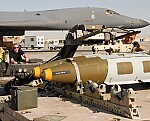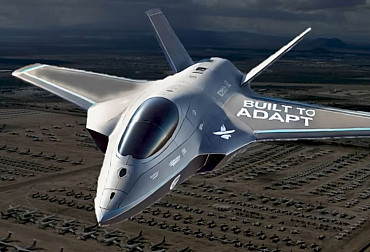Greek F-16s and Mirage 2000s could reinforce the Ukrainian Air Force. Putin is not pleased
The older version of the Greek Air Force’s F-16 Block 30 multi-role aircraft and Mirage 2000 fighters will be retired along with the old F-4 Phantom IIs, the defence minister Nikos Dendias declared. The first two types of aircraft still represent considerable value and are to be put up for sale. One potential destination could be Ukraine. However, there will be costs, and there may be more options.
The idea is on the one hand to make room in the Greek Air Force units for new combat aircraft, but at the same time to reduce the number of platform types the service is operating. With the purchase of the French Rafales and the American F-35s, the Greeks would already have in service the F-4, the F-16 Block 30, the F-16 Block 50, the F-16 Block 52+, the F-16V, the Mirage 2000 of two versions (2000-5 and 2000D), the Rafale and the F-35A. This is of course unsustainable at first sight, especially in terms of maintenance logistics, operations, training. The Greek Air Force is relatively strong, but deploying such a number of platforms is not rational.

In the late 1980s, Greece ordered 40 F-16C/D Block 30 multirole aircraft and 40 Mirage 2000EG/DG, plus another 15 already after 2000, in the Mirage 2000-5BG/EG variant. The fleets of these aircraft have melted away over the years as a result of accidents, wear and tear and more or less aggressive mid-air clashes with Turkish Air Force over disputed regions. However, there are still a total of several dozen valuable aircraft remaining from these fleets, especially as both the older F-16s and Mirage 2000s have undergone modernisation projects, including the F-16 Block 30 having undergone work to extend their operational life.
Both types of aircraft seem to have a good chance of finding a customer worldwide. Particularly the F-16C/D, for which there is no shortage of other potential users in the world. This is due to the relatively slow production of the new F-16s on Lockheed Martin's new production line. It is only scheduled to reach maximum production in 2025, at which point 48 aircraft per year will be delivered to customers. Meanwhile, following Washington's recent agreement to sell 40 F-16s to Turkey, the order book there has lengthened to around 180 aircraft and has only just begun to melt away as the first aircraft come off the production line.
Used F-16s could be of interest to countries on NATO's eastern flank, for example Romania, Bulgaria, perhaps Slovakia, which is waiting deliveries of its brand new F-16Vs, and even, theoretically, Poland. Less so with the Mirage 2000, which the Greeks praise as very good. The F-16V features an evolution of the Pratt&Whitney F-110 turbojet engine, as well as a new Northrop-Grumman AN/APG-83 SABR radar with an AESA active electronic antenna, a new mission computer, and modernised avionics and communications systems, including, in particular, a link 16 and a helmet-mounted sight. Older F-16s can be upgraded, but the Mirage 2000 will most certainly not receive any major upgrade.
In 2022, after ordering twenty-four Rafale fighter-bombers from France (twelve of them are second-hand), the Greek Air Force has withdrawn 18 Mirage 2000 EGM/BMs from service in order to concentrate on supporting its more efficient Mirage 2000-5s. According to information from the Greek daily I Kathimeriní, the Greek Air Force intends to sell them to India, which has been looking to bolster its own Mirage 2000 fleet for about four years now. In 2021, it was reported that the Indian Air Force wanted 24 more of these aircraft. The purchase of second-hand Greek Mirage 2000s would not only be aimed at increasing the number of the Indian Air Force combat aircraft, but also at obtaining spare parts to extend the operational life of the 50 aircraft already in service.
The Greek Air Force is also considering disposing of its Mirage 2000-5s. Although their availability is satisfactory, the fact remains that they will sooner or later be decommissioned, given that the project to integrate them into Link 16 has been abandoned because the cost is too high. Like the United Arab Emirates' Mirage 2000-9, the Greek 2000-5 carries the RDY-2 radar, as well as the highly effective Mica IR/EM, SCALP-ER and AM-39 Exocet missiles, making it a combat aircraft as powerful as it is versatile.
Of course, either of the mentioned Greek aircraft could end up in Ukraine. The Mirage 2000 has been mentioned in the context of helping Kiev for quite some time. Greek aircraft could theoretically be transferred together with French or even Arab aircraft. So far, however, the Ukrainians seem to be concentrating on getting into service and learning the F-16s, although on the other hand they were supposed to ask the French to give them the Mirage 2000D fighter bomber. It is worth mentioning on this occasion that Sweden declared that it could provide Ukraine with JAS-39 Gripen multirole fighter. What we said about the number of platforms deployed within the Greek Air Force is of course also true for Ukraine. However, the latter is in a critical situation, under attack from imperialist Russia, and is concentrating mainly on short-term objectives. Simply put, it will not refuse any assistance and any equipment that has the potential to contribute effectively to its defence – which the Mirage 2000 undoubtedly still is.
The Greek version of the F-16 differs in many respects from the F-16AM/BMs currently being delivered and taking it into service would present some challenges. On the other hand, however, switching to it from an F-16 of a different version would be easier than learning a completely different type of aircraft. The fact remains that Athens will certainly not be able to part with its fighters, even in an effort to rationalise, without budgetary compensation, to enable it to acquire the Rafales and F-35As still to be financed. As with the French Caesar and Slovakian Zuzana self-propelled howitzers, it is possible that a coalition of Western countries will form around Athens to finance the transaction and transfer these aircraft to Ukraine, which would certainly affect the balance of power in the conflict.
The F-16s in Ukrainian hands are apparently giving Russian dictator Putin no sleep. Speaking about the countries planning to supply Ukraine with F-16 military aircraft, he has said that Russia will destroy the planes "just as we are destroying tanks, armoured vehicles and other equipment, including salvo rocket launchers today." The planes will be a legitimate target for the Russian military whether they are launched from Ukraine or other countries, the Russian leader said recently. Denmark, the Netherlands, Belgium and Norway have pledged to supply Ukraine with over forty F-16s this year, which Kiev hopes will ensure control of Ukrainian airspace. The first six aircraft are due to arrive in the spring from Denmark, while the Netherlands is talking about deliveries during the summer. Ukraine has long asked the West to provide the aircraft. Foreign Minister Dmytro Kuleba told Reuters on Wednesday that Kiev expects the first machines in the coming months. The older Greek F-16s might also be taken into consideration.










